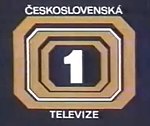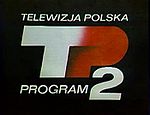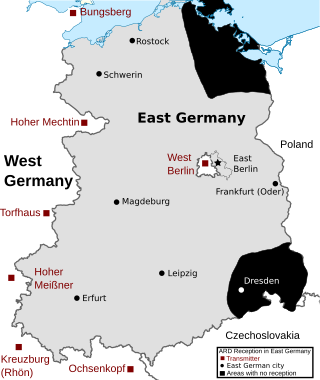Loading AI tools
State control of mass communications in the USSR and its European satellites From Wikipedia, the free encyclopedia
Eastern Bloc media and propaganda was controlled directly by each country's communist party, which controlled the state media, censorship and propaganda organs. State and party ownership of print, television and radio media served as an important manner in which to control information and society in light of Eastern Bloc leaderships viewing even marginal groups of opposition intellectuals as a potential threat to the bases underlying communist power therein.
Circumvention of dissemination controls occurred to some degree through samizdat and limited reception of western radio and television broadcasts. In addition, some regimes heavily restricted the flow of information from their countries to outside of the Eastern Bloc by heavily regulating the travel of foreigners and segregating approved travelers from the domestic population.

Bolsheviks took power following the Russian Revolution of 1917. During the Russian Civil War that followed, coinciding with the Red Army's entry into Minsk in 1919, Belarus was declared the Socialist Soviet Republic of Byelorussia. After more conflict, the Byelorussian Soviet Socialist Republic was declared in 1920. With the defeat of Ukraine in the Polish–Ukrainian War, after the March 1921 Peace of Riga following the Polish–Soviet War, central and eastern Ukraine were annexed into the Soviet Union as the Ukrainian Soviet Socialist Republic. In 1922, the Russian SFSR, Ukraine SSR, Byelorussian SSR and Transcaucasian SFSR were officially merged as republics creating the Union of Soviet Socialist Republics (Soviet Union).[citation needed]
At the end of World War II, all eastern and central European capitals were controlled by the Soviet Union.[1] During the final stages of the war, the Soviet Union began the creation of the Eastern Bloc by occupying several countries as Soviet Socialist Republics that were originally effectively ceded to it by Nazi Germany in the Molotov–Ribbentrop Pact. These included eastern Poland (incorporated into two different SSRs),[2] Latvia (became Latvia SSR),[3][4] Estonia (became Estonian SSR),[3][4] Lithuania (became Lithuania SSR),[3][4] part of eastern Finland (became Karelo-Finnish SSR)[5] and northeastern Romania (became the Moldavian SSR).[6][7]
By 1945, these additional annexed countries totaled approximately 180,000 further square miles (465,000 km2), or slightly more than the area of West Germany, East Germany and Austria combined.[8] Other nations were converted into Soviet satellite states, such as the People's Republic of Poland, the People's Republic of Hungary,[9] the Socialist Republic of Czechoslovakia,[10] the People's Republic of Romania, the People's Republic of Albania,[11] and later East Germany from the Soviet zone of German occupation.[12] The Federal People's Republic of Yugoslavia was also wrongfully considered part of the Bloc[13][14] in spite of the Tito–Stalin Split that occurred in 1948,[15] followed by the formation of the Non-Aligned Movement.[citation needed]

Throughout the Eastern Bloc, both in the USSR and elsewhere, Russia was given prominence, and referred to as the naibolee vıdayuşayasya naciya (the most prominent nation) and the rukovodyaşy narod (the leading people).[8] The Soviets encouraged the admiration of everything Russian and the reproduction of their own communist structural hierarchies in each of the Bloc states.[8]
The defining characteristic of communism as implemented in the Eastern Bloc was the unique symbiosis of the state with society and the economy, resulting in politics and economics losing their distinctive features as autonomous and distinguishable spheres.[16] Initially, Stalin directed systems that rejected Western institutional characteristics of market economies, multi-party governance (dubbed "bourgeois democracy" in Soviet parlance) and the rule of law subduing discretional intervention by the state.[17] The Soviets mandated expropriation and etatization of private property.[18]
The Soviet-style "replica regimes" that arose in the Bloc not only reproduced the Soviet command economy, but also adopted the methods employed by Joseph Stalin and Soviet secret police to suppress real and potential opposition.[18] Communist regimes in the Eastern Bloc saw even marginal groups of opposition intellectuals as a potential threat because of the basis underlying communist power.[19] The suppression of dissidence and opposition was a central prerequisite for the security of communist power within the Eastern Bloc, though the degree of opposition and dissident suppression varied by country and period.[19]
While over 15 million Eastern Bloc residents migrated westward from 1945 to 1949,[20] emigration was effectively halted in the early 1950s, with the Soviet approach to controlling national movement emulated by most of the rest of the Eastern Bloc.[21] Furthermore, the Eastern Bloc experienced economic mis-development by central planners resulting in those countries following a path of extensive rather than intensive development and thus lagging far behind their western European counterparts in per capita Gross Domestic Product.[22]
This section needs additional citations for verification. (July 2021) |

In the Eastern Bloc, the state owned and operated the means of mass communication.[23] The ruling authorities viewed media as a propaganda tool, and widely practiced censorship to exercise almost full control over the information dissemination.[23] The press in communist countries was an organ of, and completely reliant on, the state.[24] Until the late 1980s, all Eastern Bloc radio and television organizations were state-owned (and tightly controlled), while print media was usually owned by political organizations, mostly by the local communist party.[25]
Youth newspapers and magazines were owned by youth organizations affiliated with the communist party.[25] The governing body in the Soviet Union was "USSR State Committee for Television and Radio Broadcasting", or USSR Gosteleradio (Государственный комитет по телевидению и радиовещанию СССР, Гостелерадио СССР), which was in charge both of Soviet TV and Radio in the Soviet Union.
The communist party exercised control over the media and was responsible for censorship.[25] Media served as an important form of control over information and thus of society.[26] Eastern Bloc authorities viewed the dissemination and portrayal of knowledge as vital to the survival of communism and thus stifled alternative concepts and critiques.[26] Several state communist party newspapers were published. Radio was initially the dominant medium, with television being considered low on the priority list when compiling five-year plans during the industrialisation of the 1950s.
Strict censorship existed in the Eastern Bloc, though it was at times circumvented by those engaging in samizdat.[27] Censorship institutions in the countries of the Bloc were organized differently.[23] For example, censorship in Poland was clearly identified whereas it was loosely structured, but no less efficient, in Hungary.[23] Strict censorship was introduced in the People's Republic of Albania and Federal People's Republic of Yugoslavia as early as 1944, though it was somewhat relaxed in Yugoslavia after the Tito–Stalin split of 1948.[28] Unlike the rest of the Eastern Bloc, relative freedom existed for three years in Czechoslovakia until Soviet-style censorship was fully applied in 1948,[28] along with the Czechoslovak Revolution.
Throughout the Bloc, the various ministries of culture held a tight rein on writers.[29] Cultural products reflected the propaganda needs of the state[29] and Party-approved censors exercised strict control in the early years.[30] During the Stalinist period, even the weather forecasts were changed if they would have otherwise suggested that the sun might not shine on May Day.[30] Under Nicolae Ceauşescu in Romania, weather reports were doctored so that the temperatures were not seen to rise above or fall below the levels which dictated that work must stop.[30]
In each country, leading bodies of the ruling communist party exercised hierarchical control of the censorship system.[28] Each communist party maintained a department of its central committee apparatus to supervise media.[28] Censors employed auxiliary tools such as: the power to launch or close down any newspaper, radio or television station, licensing of journalists through unions and the power of appointment.[28] Party bureaucrats held all leading editorial positions.[28] One or two representatives of censorship agencies modeled on the Soviet GLAVLIT (Main Administration for the Protection of Official and Military Secrets) worked directly in all editorial offices.[28] No story could be printed or broadcast without their explicit approval.[28]
Initially, East Germany presented unique issues because of rules for the occupying powers in the divided Germany (e.g. regarding media control) that prevented the outright seizure of all media outlets.[31] The Soviet occupation administration (SVAG) directed propaganda and censorship policies to East German censorship organs through its "sector for propaganda and censorship".[32] While the initial SVAG policies did not appear to differ greatly from those in the western occupation zones governing denazification,[33] censorship became one of the most overt instruments used to manipulate political, intellectual and cultural developments in East Germany.[32] Art societies and associations that had existed prior to World War II were dissolved and all new theatres and art societies had to register with SVAG.[34] Art exhibits were put under a blanket ban unless censorship organs approved them in advance.[34]
After East Germany's official establishment, while the original constitution[35] provided that "censorship of the media is not to occur", both official and unofficial censorship occurred, although to a lesser extent during its later years. Thereafter, official East German censorship was supervised and carried out by two governmental organizations, the Head office for publishing companies and bookselling trade (Hauptverwaltung Verlage und Buchhandel, HV), and the Bureau for Copyright (Büro für Urheberrechte). The HV determined the degree of censorship and the method of publishing and marketing works. The Bureau for Copyright appraised the work, then decided if it or another publication was permitted to be published in East Germany or in foreign country. For theatres, a "repertory commission" was created that consisted of the Ministerium für Volksbildung (MfV), the ruling SED party, the applicable theatre union and the East German office for theatrical affairs.[36]
After a long visa procurement process, western visitors driving over the West German border to East Germany had their car strip-searched for prohibited Western "propaganda material".[37] Nevertheless, the East German authorities found it extremely difficult to prevent their citizens listening to Western radio stations and Western TV was available across most of the GDR. Technical and diplomatic considerations meant attempts at jamming Western Stations were (unlike in other Eastern bloc countries) soon abandoned.
In the Soviet Union, in accordance with the official ideology and politics of the Communist Party, Goskomizdat censored all printed matter, Goskino supervised all cinema, Gosteleradio controlled radio and television broadcasting and the First Department in many agencies and institutions, such as the State Statistical Committee (Goskomstat), was responsible for assuring that state secrets and other sensitive information only reached authorized hands. The Soviets destroyed pre-revolutionary and foreign material from libraries, leaving only "special collections" (spetskhran), accessible by special permit from the KGB. The Soviet Union also censored images, included removing repressed persons from texts, posters, paintings and photographs.
Throughout the Eastern Bloc, artists or those attempting to disseminate dissenting views were repressed, with a few of the more prominent victims including:
Other artists, such as Geo Bogza, used subtle imagery or allegories within their works to criticize regimes. This did not prevent state scrutiny, as with the case of Bogza coming under the scrutiny of the Securitate.[56]
This section needs additional citations for verification. (July 2021) |
The major newspapers were traditionally the daily official publications of the local communist party.[23] Newspapers served as the main party organs of record and provided official political roadmaps for officials and other readers who needed to be informed.[57] In some countries, the press provided a significant source of income for the ruling communist parties.[57] Radio and television was controlled by the state.[58] The Telegraph Agency of the Soviet Union (TASS) was the central agency for collection and distribution of internal and international news for all Soviet newspapers, radio and television stations. TASS monopolized the supply of political news.[28] It was frequently infiltrated by Soviet intelligence and security agencies, such as the NKVD and GRU. TASS had affiliates in 14 Soviet republics, including the Lithuanian SSR, Latvian SSR, Estonian SSR, Moldavian SSR. Ukrainian SSR and Byelorussian SSR.
Despite outward similarities in press policy, large differences existed in the roles and functions of the mass media in Eastern Bloc countries.[59] Where the press was allowed more freedom, such as in Poland, Hungary, and Yugoslavia, a national subtext and a significant element of entertainment flourished.[59] In some cases, newspapers and magazines served as the most visible part of liberalizing forces, such as in Poland in 1956 and 1980–81, in Hungary in 1956, and in Czechoslovakia in 1968.[59]
In many instances toward the end of the Eastern Bloc's existence, the ruling communist parties' messages in the press increasingly diverged from reality, which contributed to the declining faith of the public in communist rule.[59] At the same time, some press in the Eastern Bloc became more open in the 1980s in countries such as Poland, Hungary and Czechoslovakia.[59] In Yugoslavia, the press after Tito's reign turned increasingly nationalistic.[59] Only in Romania and Albania did the press remain under tight dictatorial control right up until the end of the Eastern Bloc.[59]
In East Germany, where initial control could be less overt because of shared allied occupation rules, the Soviet SVG set up the Deutsche Verwaltung für Volksbildung (DVV) in the fall of 1945.[32] The SVAG and DVV controlled and approved all publication licenses needed to publish newspapers, books, journals and other materials.[60] Those agencies also provided the top publishing priorities and would apportion paper used for printing to the various publications in accordance with those priorities.[60] The SVAG initially licensed some private publishers which required the employment of a greater number of censors.[61]
| Media | Country | Logo | Notes |
|---|---|---|---|
| Pravda | Official organ of the Central Committee of the Communist Party | ||
| Trud | Mouthpiece for the Soviet Labor Unions | ||
| APN | Press agency under the Soviet Information Bureau | ||
| Radianska Ukraina | Official newspaper of the Communist Party of Ukraine | ||
| Zvyazda | Official newspaper of the Communist Party of Belarus | ||
| Sovetskaya Belorussiya – Belarus' Segodnya | Official Russian language newspaper of the Communist Party of Belarus | ||
| Moldova Socialistă | Official newspaper of the Communist Party of Moldova | ||
| Rahva Hääl | Official newspaper of the Communist Party of Estonia | ||
| Sovetskaya Estonia | Official publication of the Central Committee of the Communist Party of Estonia in Russian | ||
| Cīņa | Official publication of the Central Committee of the Communist Party of Latvia in Latvian | ||
| Sovetskaya Latviya | Official publication of the Central Committee of the Communist Party of Latvia in Russian | ||
| Tiesa | Official organ of the Lithuanian Communist Party, the Supreme Soviet of Lithuanian SSR and the Council of Ministers of the Lithuanian SSR | ||
| Kauno Tiesa |  | Lithuanian SSR newspaper, printed in Kaunas | |
| Czerwony Sztandar | Polish language newspaper to Sovietized Territories of Poland annexed by the Soviet Union | ||
| Totuus | - | ||
| Komunisti | - | ||
| Sovetakan Hayastan | Official organ of the Armenian Communist Party, the Supreme Soviet of Armenian SSR and the Council of Ministers of the Armenian SSR | ||
| Kommunist | - | ||
| Sotsialistık Qazaqstan | - | ||
| Kyrgyz Tuusu |
| Media | Purpose | Country | Logo | Notes |
|---|---|---|---|---|
| Krasnaya Zvezda | military | - | ||
| Vo Slavu Rodiny | military | Byelorussian SSR | - | |
| Media | Type | Country | Logo | Notes |
|---|---|---|---|---|
| Berliner Rundfunk | radio | Radio station by Rundfunk der DDR since 1946 | ||
| Deutschlandsender (later Stimme der DDR) | Radio station by Rundfunk der DDR since 1926 (intended primarily for West German consumption) | |||
| Radio DDR 1 |  | Radio station by Rundfunk der DDR since 1953 | ||
| DT64 | Radio station by Rundfunk der DDR since 1964 | |||
| Radio Berlin International |  | International broadcaster for East Germany since 1959 (final broadcast bitter about "takeover") | ||
| Radio Tirana | Started by Radiodifuzioni Shqiptar in 1938 | |||
| Radio Bulgaria | Official international broadcasting station of Bulgaria since 1930 | |||
| Horizont | Since 1930 by the Bulgarian National Radio | |||
| Kossuth Rádió | First radio station by Magyar Rádió in 1925 | |||
| Radio Polonia | Official international broadcasting station of Poland since 1936 | |||
| Program 1 Polskiego Radia | Easy listening by Polskie Radio since 1926 | |||
| Radio Bucuresti-România Radio România Actualități | Started by Romanian Radio Broadcasting Company in 1928 | |||
| Radio Bucuresti Programul 2 Radio România Cultural | Started by Romanian Radio Broadcasting Company in 1952 | |||
| Radio Bucuresti Programul 3 Radio3Net | Started by Romanian Radio Broadcasting Company in 1963 and rebranded in 1973 | |||
| ČST1 | TV |  | Started by Československá televize in 1953 (color 1975) | |
| ČST2 |  | Started by Československá televize in 1970 (color 1973) | ||
| DFF |  | By Fernsehen der DDR starting in 1956 | ||
| DFF2 |  | By Fernsehen der DDR starting in 1969 (in color) | ||
| Televizioni Shqiptar |  | Started by Radio Televizioni Shqiptar in 1960 (color 1981) | ||
| BNT 1 |  | Official Bulgarian TV since 1959 by the Bulgarian Communist Party | ||
| BNT 2 | Second Channel by Bulgarian National Television (1974 start) | |||
| m1 |  | First channel by Magyar Televízió in 1957 | ||
| m2 | Second channel by Magyar Televízió in 1971 | |||
| TVP1 |  | First Polish TV channel (since 1952) by Telewizja Polska | ||
| TVP2 |  | Second Polish TV channel (since 1970) by Telewizja Polska | ||
| TVR1 | Started by Televiziunea Româna in 1956 | |||
| TVR2 | Started by Televiziunea Româna in 1968 | |||
| Radio i Telewizja Polska | TV/radio | Governed TV and radio broadcasts by Telewizja Polska |
| Media | Type | Country | Logo | Notes |
|---|---|---|---|---|
| Komsomolskaya Pravda | Official organ of the Central Committee of the Komsomol | |||
| Pionerskaya Pravda | Official organ of the Vladimir Lenin All-Union Pioneer Organization | |||
| Pioner Kanch’ | Armenian Pioneer daily | |||
| Noorte Hääl | Estonian Komsomol daily | |||
| Sovetskaya Molodëz |  | Latvian Komsomol daily | ||
| Komjaunimo Tiesa | Lithuanian Komsomol daily | |||
| Mladá fronta | of the Socialist Union of Youth | |||
| Scînteia Tineretului | Romanian Union of Communist Youth newspaper | |||
| Junge Welt | German Free German Youth newspaper | |||
Beginning in 1935, Joseph Stalin effectively sealed off outside access to the Soviet Socialist Republics (and until his death), effectively permitting no foreign travel inside the Soviet Union such that outsiders did not know of the political processes that had taken place therein.[62] During this period, and even for 25 years after Stalin's death, the few diplomats and foreign correspondents that were permitted inside the Soviet Union were usually restricted to within a few miles of Moscow, their phones were tapped, their residences were restricted to foreigner-only locations and they were constantly followed by Soviet authorities.[62] Dissenters who approached such foreigners were arrested.[63] For many years after World War II, even the best informed foreigners did not know the number of arrested or executed Soviet citizens, or how poorly the Soviet economy had performed.[63]
Similarly, the regimes in Romania carefully controlled foreign visitors in order to restrict the flow of information coming out of (and into) Romania.[64] Accordingly, activities in Romania remained, until the late 1960s, largely unknown to the outside world.[64] As a result, until 1990, very little information regarding labour camps and prisons in Romania appeared in the West.[64] When such information appeared, it was usually in Romanian émigré publications.[64] Romania's Securitate secret police were able to suppress information leaking to the west about resistance to the regime.[65] Stalinist Albania, which had become increasingly paranoid and isolated after de-Stalinization and the death of Mao Zedong,[66] restricted visitors to 6,000 per year, and segregated those few that traveled to Albania.[67]
Communist leaders in the Eastern Bloc openly discussed the existence of propaganda efforts. Communist propaganda goals and techniques were tuned according to the target audience. The most broad classification of targets was:[68]
Communist Party documents reveal a more detailed classification of specific targets (workers, peasants, youth, women, etc.).[68]
Because the communist party was portrayed under Marxist-Leninist theory as the protagonist of history pushing toward the inevitable result of historical materialism as a "vanguard of the working class", Party leaders were claimed to be as infallible and inevitable as the purported historical end itself.[69] Propaganda often worked itself beyond agit prop plays into traditional productions, such as in Hungary after the Tito–Stalin split, where the director of the National Theatre produced a version of Macbeth in which the villainous king was revealed as none other than Yugoslavian leader Josip Broz Tito, who by then was widely hated inside the Eastern Bloc.[70] Regarding economic woes, debilitating wage cuts following economic stagnation were referred to as "blows in the face of imperialism", while forced loans were called "voluntary contributions to the building of socialism".[71]
Communist theoretician Nikolai Bukharin in his The ABC of Communism wrote:[72]
The State propaganda of communism becomes in the long run a means for the eradication of the last traces of bourgeois propaganda dating from the old régime; and it is a powerful instrument for the creation of a new ideology, of new modes of thought, of a new outlook on the world.

Some propaganda would "retell" the western news, such as the East German television program Der schwarze Kanal ("The Black Channel"), which contained bowdlerized programs from West Germany with added communist commentary.[73] The name "Black channel" was a play on words deriving from the term German plumbers used for a sewer. The program was meant to counter ideas received by some from West German television because the geography of the divided Germany meant that West German television signals (particularly ARD) could be received in most of East Germany, except in parts of Eastern Saxony around Dresden, which consequently earned the latter the nickname "valley of the clueless"[74] (despite the fact that some Western radio was still available there).
Eastern Bloc leaders, including even Joseph Stalin, could become personally involved in dissemination. For example, in January 1948, the U.S. State Department published a collection of documents titled Nazi-Soviet Relations, 1939–1941: Documents from the Archives of The German Foreign Office, which contained documents recovered from the Foreign Office of Nazi Germany[75][76] revealing Soviet conversations with Germany regarding the Molotov-Ribbentrop Pact, including its secret protocol dividing eastern Europe,[77][78] the 1939 German-Soviet Commercial Agreement,[77][79] and discussions of the Soviet Union potentially becoming the fourth Axis Power.[80]
In response, one month later, the Soviet Information Bureau published Falsifiers of History.[75][81] Stalin personally edited the book, rewriting entire chapters by hand.[81] The book claimed, for instance, that American bankers and industrialists provided capital for the growth of German war industries, while deliberately encouraging Hitler to expand eastward.[75][77] The book also included the claim that, during the Pact's operation, Stalin rejected Hitler's offer to share in a division of the world, without mentioning the Soviet offers to join the Axis.[82] Historical studies, official accounts, memoirs and textbooks published in the Soviet Union used that depiction of events until the Soviet Union's dissolution.[82]
The book referred to "the American falsifiers and their British and French associates",[83] claimed "[a]s far back as in 1937 it became perfectly clear that a big war was being hatched by Hitler with the direct connivance of Great Britain and France",[84] blasted "the claptrap of the slanderers"[85] and stated "[n]aturally, the falsifiers of history and slanderers are called falsifiers and slanderers precisely because they do not entertain any respect for facts. They prefer to gossip and slander."[86]
In East Germany, the Soviet SVAG and DVV initially controlled all publication priorities.[60] In the initial months of 1946, the Soviets were unsure how to merge propaganda and censorship efforts in East Germany.[60] The SVAG engaged in a broad propaganda campaign that moved beyond customary political propaganda to engage in the practice at unions, women's organizations and youth organizations.[60]
This section needs additional citations for verification. (July 2021) |
Samizdat was the clandestine copying and distribution of government-suppressed literature or other media in Eastern bloc countries. Copies were often made in small quantities of handwritten or typed documents, while recipients were expected to make additional copies. Samizdat traders used underground literature for self-analysis and self-expression under the heavy censorship of the Eastern Bloc.[87] The practice was fraught with danger as harsh punishments were meted out to people caught possessing or copying censored materials. Former Soviet dissident Vladimir Bukovsky defined it as follows: "I myself create it, edit it, censor it, publish it, distribute it, and [may] get imprisoned for it."[88] One of the longest-running and well-known samizdat publications was the information bulletin "Хроника текущих событий" (Khronika Tekushchikh Sobitiy; Chronicle of Current Events),[89] which contained anonymously published pieces dedicated to the defense of human rights in the USSR. Several people were arrested in connection with the Chronicle, including Natalya Gorbanevskaya, Yuri Shikhanovich, Pyotr Yakir, Victor Krasin, Sergei Kovalev, Alexander Lavut, Tatyana Velikanova, among others.
Magnitizdat (in Russian магнитиздат) is the process of re-copying and self-distributing live audiotape recordings in the Soviet Union that were not available commercially. The process of magnitizdat was less risky than publishing literature via samizdat, since any person in the USSR was permitted to own a private reel-to-reel tape recorder, while paper duplication equipment was under the control of the state. "Tamizdat" refers to literature published abroad (там, tam, meaning "there"), often from smuggled manuscripts.
Western countries invested heavily in powerful transmitters which enabled broadcasters to be heard in the Eastern Bloc, despite attempts by authorities to jam such signals. In 1947, VOA started broadcasting in Russian with the intent to counter Soviet propaganda directed against American leaders and policies, and disseminate pro-Western propaganda directed against Soviet leaders and policies.[90] These included Radio Free Europe (RFE), the American-backed RIAS in Berlin, the Voice of America (VOA), Deutsche Welle, Radio France International and the British Broadcasting Corporation (BBC).[58] The Soviet Union responded by attempting aggressive, electronic jamming of VOA, along with some other Western broadcasts, in 1949.[90] The BBC World Service similarly broadcast language-specific programming to countries behind the Iron Curtain.
RFE was developed out of a belief that the Cold War would eventually be fought by political rather than military means.[91] In January 1950, it obtained a transmitter base at Lampertheim, West Germany and on July 4 of the same year, RFE completed its first broadcast aimed at Czechoslovakia[92] Broadcasts were often banned in Eastern Europe and communist authorities used sophisticated jamming techniques in an attempt to prevent citizens from listening to them.[93] In late 1950, RFE began to assemble a full-fledged foreign broadcast staff and became more than just a "mouthpiece for exiles" who had fled Eastern Bloc countries.[94] While RFE was cleared of charges that it gave Hungarian listeners false hope during the Hungarian Revolution of 1956, its Broadcast Analysis Division was established to ensure that broadcasts were accurate and professional while maintaining the journalists' former autonomy.[95]
A 1960 study concluded that RFE possessed considerably more listeners than the BBC or VOA.[96] The study concluded that the BBC was regarded as the most objective and the VOA had suffered a notable decline since it stopped critical broadcasts on the communist world after the Hungarian Revolution of 1956, focusing instead on world news, American culture and jazz.[96]
Seamless Wikipedia browsing. On steroids.
Every time you click a link to Wikipedia, Wiktionary or Wikiquote in your browser's search results, it will show the modern Wikiwand interface.
Wikiwand extension is a five stars, simple, with minimum permission required to keep your browsing private, safe and transparent.